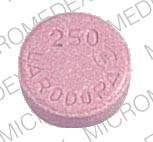Levodopa Disease Interactions
There are 11 disease interactions with levodopa.
- Cardiac disease
- Neuroleptic malignant syndrome
- Psychoses/depression
- Glaucoma
- Liver/renal
- Melanoma
- Reactive airway disease
- Sleep disorders
- Hypotension
- Psychosis
- GI bleeding
Dopamine agonists (applies to levodopa) cardiac disease
Major Potential Hazard, Low plausibility. Applicable conditions: Cardiovascular Disease
Cardiac irregularities occur infrequently in patients on dopamine agonists. The initial administration and titration is recommended to occur under close cardiac monitoring in a facility equipped for intensive cardiac care. Adverse cardiac affects may include palpitation, sinus tachycardia, ventricular tachycardia, extrasystole, atrial flutter or fibrillation, or block of AV conduction.
Dopamine agonists (applies to levodopa) neuroleptic malignant syndrome
Major Potential Hazard, Low plausibility.
The use of dopamine agonists is contraindicated in patients with neuroleptic malignant syndrome (NMS). NMS is characterized by hyperthermia, muscle rigidity, altered mental status, irregular pulse or blood pressure, tachycardia, and diaphoresis. The syndrome may rarely be precipitated by abrupt discontinuation of the dopamine agonist.
Dopamine agonists (applies to levodopa) psychoses/depression
Major Potential Hazard, Moderate plausibility. Applicable conditions: Psychosis
The use of dopamine agonists has been associated with psychiatric effects such as hallucinations, psychosis, confusion, anxiety, mania, hypomania, depression, rapid mood cycling, nightmares, and hypersexuality. Therapy with dopamine agonists should be administered cautiously in psychotic patients and all patients should be carefully observed for development of depression and suicidal tendencies.
Levodopa (applies to levodopa) glaucoma
Major Potential Hazard, High plausibility. Applicable conditions: Glaucoma/Intraocular Hypertension
The use of levodopa is contraindicated in patients with acute closed-angle glaucoma. Levodopa (with or without carbidopa) may be used in patients with open-angle glaucoma who are receiving appropriate therapy.
Levodopa (applies to levodopa) liver/renal
Major Potential Hazard, Moderate plausibility. Applicable conditions: Liver Disease, Renal Dysfunction
The pharmacokinetics of levodopa have not been studied in patients with hepatic or renal impairment. Therapy with levodopa should be administered cautiously in patients with liver or disease. Periodic monitoring of hepatic and renal function is recommended during extended therapy.
Levodopa (applies to levodopa) melanoma
Major Potential Hazard, Moderate plausibility. Applicable conditions: Skin Cancer
The use of levodopa is considered by manufacturers to be contraindicated in patients with a history of melanoma or in patients with suspicious, undiagnosed skin lesions. Levodopa reportedly may activate malignant melanoma, although some investigators have found a causal relationship to be tenuous.
Levodopa (applies to levodopa) reactive airway disease
Major Potential Hazard, Low plausibility. Applicable conditions: Asthma, Chronic Obstructive Pulmonary Disease
Because of the risk of bronchospasm, use of levodopa in patients with asthma, COPD, or other chronic underlying lung disease is not recommended.
Carbidopa/levodopa (applies to levodopa) sleep disorders
Moderate Potential Hazard, Moderate plausibility.
Patients treated with products containing carbidopa and levodopa report excessive somnolence and falling asleep while engaged in daily activities, sometimes with no warning sign of drowsiness. Advise patients about the risks, especially those suffering from sleep disorders or using concomitant sedating medications.
Dopamine agonists (applies to levodopa) hypotension
Moderate Potential Hazard, Moderate plausibility.
Dopamine agonists may impair the systemic regulation of blood pressure, with resultant orthostatic hypotension at any time, but especially during dose escalation. Additionally, patients with Parkinson's disease may have an impaired capacity to respond to an orthostatic challenge. For these reasons, patients with Parkinson's disease (or restless legs syndrome) who are being treated with dopaminergic agonists typically require careful monitoring for signs/symptoms of orthostatic hypotension, especially during dose escalation, and should be advised of this risk.
Dopaminergic antiparkinsonian agents (applies to levodopa) psychosis
Moderate Potential Hazard, Moderate plausibility.
Ordinarily, patients with major psychotic disorder should not be treated with dopaminergic antiparkinsonian agents, because of the risk of exacerbating psychosis. Hallucinations and psychotic-like behavior have been reported with dopaminergic medications. In addition, certain medications used to treat psychosis may exacerbate the symptoms of Parkinson's disease and may decrease the effectiveness of these drugs. The use of bromocriptine in patients with severe psychotic disorders is not recommended.
Levodopa (applies to levodopa) GI bleeding
Moderate Potential Hazard, Low plausibility. Applicable conditions: Gastrointestinal Hemorrhage
The use of levodopa, especially in combinations with carbidopa, has been associated with an increase in the frequency of gastrointestinal hemorrhage. Therapy with levodopa should be administered cautiously in patients with a history of peptic ulcer disease or gastrointestinal hemorrhage.
Switch to professional interaction data
Levodopa drug interactions
There are 521 drug interactions with levodopa.
Levodopa alcohol/food interactions
There is 1 alcohol/food interaction with levodopa.
More about levodopa
- levodopa consumer information
- Check interactions
- Compare alternatives
- Reviews (1)
- Side effects
- Dosage information
- Patient tips
- During pregnancy
- Support group
- Drug class: dopaminergic antiparkinsonism agents
- Breastfeeding
- En español
Related treatment guides
Drug Interaction Classification
| Highly clinically significant. Avoid combinations; the risk of the interaction outweighs the benefit. | |
| Moderately clinically significant. Usually avoid combinations; use it only under special circumstances. | |
| Minimally clinically significant. Minimize risk; assess risk and consider an alternative drug, take steps to circumvent the interaction risk and/or institute a monitoring plan. | |
| No interaction information available. |
See also:
Further information
Always consult your healthcare provider to ensure the information displayed on this page applies to your personal circumstances.


